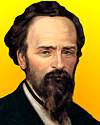
On 4 April 1821, Linus Yale, Jr., was born. He became a pioneer in the modern design of locks. His father ressurected the ancient Egyptian design of pin tumblers, and Linus, Jr. improved it by combining it with a small revolving cylinder containing the tumblers. The design made possible the use of the short, flat, key—now so familiar on the doors of homes. His entry into invention in the design of locks began after his father’s death, when he produced very secure bank locks Linus Yale, late in life, formed a partnership with Henry Towne to form the The Yale & Towne Manufacturing Co. Towne developed the company into a major industry. From the five-acre, 35-employee factory when the business was formed in 1868, the plant had grown by 1920 to 25 acres with upwards of 5,000 workers. Both of these industrious people are described in a short biographical chapter in Famous Leaders of Industry (1920), which makes interesting reading.

On 4 April 1931, André Michelin died, a French industrialist who, with his younger brother Édouard, founded Michelin Tyre Co. in 1888, expanding the rubber company established (1832) by their grandfather. The Michelins made the first pneumatic tyres that could be easily removed for repair, and other innovations. The company also created a tourist guide organization which placed milestones on French roads and established a standard road map service for most of Europe. André created Michelin guides to promote tourism by car. The first Red Guide, with restaurant ratings, was published in 1900. So—yes, the Michelin star restaurants share the same origin as the Michelin tires. The remarkable story of how these two brothers—Edouard and Andre Michelin—turned the sleepy family rubber firm in the heart of rural France into one of the most innovative and successful tire makers in the world. Andre, trained as an engineer, displayed an artistic genius for advertising and marketing. You can learn more about these remarkably versatile men in Today's book pick is: The Michelin Men: Driving an Empire, by Herbert R. Lottman
It is available from Amazon, typically about New from $17.99. Used from $4.19. (As of earlier time of writing - subject to change.)

On 4 Apr 1938, Ananda M. Chakrabarty was born, an Indian-American biochemist who was the first to patent a genetically engineered life-form. After his application was initially turned down by the U.S. Patent Office, he appealed, and eventually won in the U.S. Supreme Court. It was ruled that a new form of life indeed could be patented when they are the outcome of human ingenuity. The new single cell life form had the potential to clean up toxic spills because of its ability to break down crude oil into simpler substances that could even become food for aquatic life. Today’s book selection is different because it is the scientistś work of fiction. Today's book pick is: Bugging Cancer: Daring to Dream, by Ananda M. Chakrabarty and his colleagues at the Chicago Oncogroup. They have written a compelling dramatic thriller - a fiction book - based on real-life scientific work. It incorporates into the plot, real scientific progress in using bacteria and bacterial proteins to attack malignant tumor cells. Scientific results are extended in a fictional way to describe the cancer-fighting power of an imaginary bacterial protein termed neelazin. The book also mirrors present-day issues, including international competition for scientific talent, issues in patent law, research ethics, and financing. Being written by a team of seasoned scientific and business professionals, this book will appeal to researchers, patent attorneys, physicians, and any anyone else interested in healthcare and scientific innovation.
It is available from Amazon, typically about New from $24.95. Used from $2.55. (As of earlier time of writing - subject to change.)
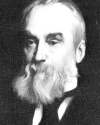 | For in disease the most voluntary or most special movements, faculties, etc., suffer first and most, that is in an order the exact opposite of evolution. Therefore I call this the principle of Dissolution. |
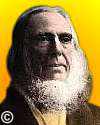 | When rich men are thus brought to regard themselves as trustees, and poor men learn to be industrious, economical, temperate, self-denying, and diligent in the acquisition of knowledge, then the deplorable strife between capital and labor, tending to destroy their fundamental, necessary, and irrefragable harmony will cease, and the world will no longer be afflicted with such unnatural industrial conflicts as we have seen during the past century... |
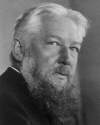 | Die Wissenschaft ist ein Land, welches die Eigenschaft hat, um so mehr Menschen beherbergen zu können, je mehr Bewohner sich darin sammeln; sie ist ein Schatz, der um so grösser wird, je mehr man ihn teilt. Darum kann jeder von uns in seiner Art seine Arbeit tun, und die Gemeinsamkeit bedeutet nicht Gleichförmigkeit. Science is one land, having the ability to accommodate even more people, as more residents gather in it; it is a treasure that is the greater the more it is shared. Because of that, each of us can do his work in his own way, and the common ground does not mean conformity. |
| Before you look at today's web page, see if you can answer some of these questions about the events that happened on this day. Some of the names are very familiar. Others will likely stump you. Tickle your curiosity with these questions, then check your answers on today's web page. | |
| Births | |
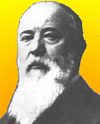 | Zénobe-Théophile Gramme, born 4 Apr 1826, was a French engineer who invented (1870) the first device of a certain kind that was practical for mass production and distribution. When powered by a steam engine, it was immediately successful and began a new era. What was Gramme's invention? |
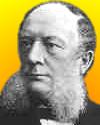 | Sir William Siemens, born 4 Apr 1823, was a German-born English engineer, inventor, and pioneer in undersea cable and telegraph industries. In another industry, he developed the “regenerative system” which used waste gases to preheat fuel gases. In which industry was his regenerative system applied? |
| Deaths | |
 | A Scottish mathematician (1550-1617) originated the concept of logarithms as a mathematical device to aid in calculations. Can you name this mathematician? |
| Events | |
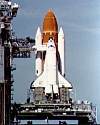 | On 4 Apr 1983, the space shuttle Challenger roared into orbit on its maiden voyage. Challenger flew nine successful Space Shuttle missions, but was lost shortly after its tenth launch on 28 Jan 1986 when a booster failure resulted in the breakup of the vehicle. From what source was the Challenger's name taken? |
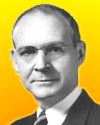 | On 4 Apr 1932, Professor C. Glen King of the University of Pittsburgh isolated a certain compound, a medical and scientific breakthrough that took five years of effort. He isolated the crystalline substance from untold thousands of lemons. King and his colleagues identified, and later synthesized this compound. What compound did he isolate? |
Fast answers for the previous newsletter for April 3: chimpanzees • Antarctica • vibration of thin plates covered in sand • the decade including the year 1973 • the decade including the year 1934.
 If you enjoy this newsletter, the website, or wish to offer encouragement or ideas, please send feedback by using your mail reader Reply button.
If you enjoy this newsletter, the website, or wish to offer encouragement or ideas, please send feedback by using your mail reader Reply button. Your click on a Facebook, StumbleUpon, or other social button on the site webpages is also a welcome sign of appreciation. Thank you for using them.
© This newsletter is copyright 2020 by todayinsci.com. Please respect the Webmaster's wishes and do not put copies online of the Newsletter — or any Today in Science History webpage. (If you already have done so, please remove them. Thank you.) Offline use in education is encouraged such as a printout on a bulletin board, or projected for classroom viewing. Online, descriptive links to our pages are welcomed, as these will provide a reader with the most recent revisions, additions and/or corrections of a webpage. For any other copyright questions, please contact the Webmaster by using your mail reader Reply button.
--
If you do not want to receive any more newsletters, Unsubscribe
To update your preferences and to unsubscribe visit this link
Executive Real Estate Business Class
-
"It was like a man with wings. It wasn't like anything you'd see on TV or in a monster movie." ...
About the publisher
Search This Blog
Blog Archive
-
▼
2021
(585)
-
▼
April
(57)
- On This Day for April 30 - George Washington inaug...
- Newsletter for Friday 30 April.
- On This Day for April 29 - British royal wedding, ...
- Newsletter for Thursday 29 April.
- On This Day for April 28 - Benito Mussolini execut...
- Newsletter for Wednesday 28 April.
- On This Day for April 27 - Independence for Sierra...
- Newsletter for Tuesday 27 April.
- On This Day for April 26 - Chernobyl nuclear accid...
- Newsletter for Monday 26 April.
- On This Day for April 25 - Hubble Space Telescope ...
- See How They Tracked Down Bin Laden
- Newsletter for Sunday 25 April.
- On This Day for April 24 - Installation of Pope Be...
- Newsletter for Saturday 24 April.
- On This Day for April 23 - Voting for Eritrea's in...
- Earth Day Bonus: Become a Climate Action Expert
- On This Day for April 22 - First Earth Day, Miguel...
- On This Day for April 21 - French elections held, ...
- Newsletter for Wednesday 21 April.
- On This Day for April 20 - Explosion on the Deepwa...
- Newsletter for Tuesday 20 April.
- On This Day for April 19 - American Revolution beg...
- Newsletter for Monday 19 April.
- On This Day for April 18 - The midnight ride of Pa...
- Newsletter for Sunday 18 April.
- On This Day for April 17 - Canada Act proclaimed, ...
- Newsletter for Saturday 17 April.
- On This Day for April 16 - Harriet Quimby's flight...
- Newsletter for Friday 16 April.
- On This Day for April 15 - Sinking of the Titanic,...
- Newsletter for Thursday 15 April.
- On This Day for April 14 - Abraham Lincoln shot, J...
- On This Day for April 13 - Alfred Dreyfus imprison...
- Newsletter for Tuesday 13 April.
- On This Day for April 12 - Launch of first space s...
- Newsletter for Monday 12 April.
- John of Gaunt: father of England’s medieval monarchy
- On This Day for April 11 - Napoleon's abdication a...
- Newsletter for Sunday 11 April.
- On This Day for April 10 - Anschluss approved in A...
- On This Day for April 9 - Fall of Baghdad, Jørn Ut...
- Newsletter for Friday 9 April.
- On This Day for April 8 - Celebration of the Buddh...
- On This Day for April 7 - Jack Nicklaus's first Ma...
- Newsletter for Wednesday 7 April.
- On This Day for April 6 - Olympics revived, Raphae...
- On This Day for April 5 - Battle of Maipú, Colin P...
- The history and origins of Easter
- On This Day for April 4 - Martin Luther King, Jr.,...
- Newsletter for Sunday 4 April.
- On This Day for April 3 - Implementation of the Ma...
- Newsletter for Saturday 3 April.
- On This Day for April 2 - Death of Pope John Paul ...
- Newsletter for Friday 2 April.
- On This Day for April 1 - Creation of Nunavut, Ser...
- Newsletter for Thursday 1 April.
-
▼
April
(57)
-
Blogroll
-
About
HistoryFact










I read your post and got it quite informative. I couldn't find any knowledge on this matter prior to. I would like to thanks for sharing this article here.best rubber factory in uae
ReplyDelete